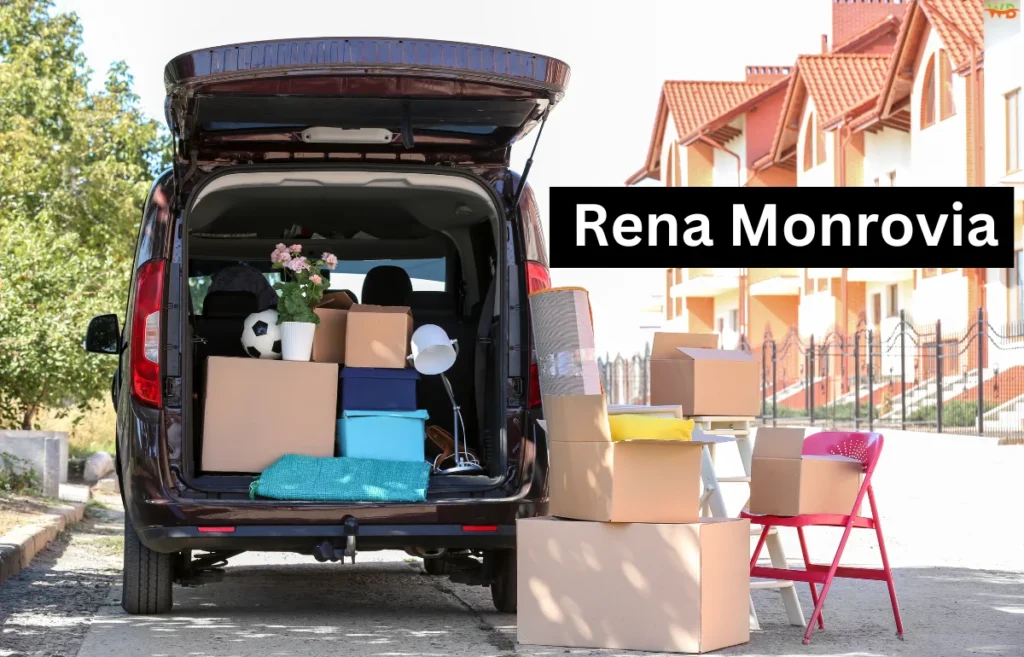When it comes to transporting goods by car, the process may seem straightforward, but there are many factors to consider for a smooth and safe journey. Whether you’re relocating to a new home, running a business that requires deliveries, or organizing an event, understanding the ins and outs of transporting goods efficiently is key. One name that comes up frequently in discussions about logistics is Rena Monrovia. With her extensive experience in the field, she offers invaluable advice on how to safely and efficiently transport goods. In this article, we’ll explore the process of transporting goods by car, offering practical tips from Rena Monrovia to make sure everything arrives at its destination in perfect condition.
The Importance of Planning and Safety in Car Transportation
Transporting goods by car isn’t just about throwing things into your vehicle and heading out. Effective planning is crucial to ensuring both the safety of your items and the efficiency of your trip. Rena Monrovia emphasizes that before hitting the road, proper organization and preparation are key. This helps minimize risks, protects your belongings, and ensures a smoother journey.
Why Planning Ahead Matters
Whether you are moving household items, delivering goods for a business, or transporting equipment for an event, the first step is always planning. You’ll want to list everything you’re transporting, group similar items, and determine the best way to pack them securely. This approach will help reduce clutter and avoid unexpected mishaps on the road.
Step-by-Step Guide to Packing and Organizing Your Car for Transport
Packing and organizing your car properly is essential for an efficient move. Rena Monrovia suggests following these steps to ensure everything stays organized, protected, and balanced:
1. Gather the Right Packing Materials
Before packing your car, gather all the materials you’ll need: sturdy boxes, bubble wrap, packing tape, and protective blankets. Proper packing materials will prevent damage and make unloading much easier.
2. Distribute Weight Evenly
Proper weight distribution is vital for the safety of both your belongings and the vehicle. Heavy items should be placed at the bottom and towards the center of the vehicle, while lighter, more fragile items should be placed on top. Rena Monrovia advises that this balance will make sure your car handles properly on the road, and your items won’t shift during transport.
3. Use Tie-Downs and Straps
Once your items are packed, it’s time to secure them. This is where safety comes into play. Use tie-downs or straps to keep larger items in place, ensuring they don’t move while driving. Rena emphasizes the importance of securing every single item to prevent damage or injury.
4. Maximize Space and Organization
To ensure everything fits and is easy to access when you arrive at your destination, Rena Monrovia recommends organizing items based on priority. Start by placing items you’ll need access to first, such as documents or tools, on top or inaccessible spots.
Route Planning: A Critical Step for Efficient Transport
A well-thought-out route is essential for a smooth and efficient journey. Rena Monrovia suggests considering factors like road closures, traffic patterns, and weather conditions before hitting the road.
Planning Your Route: Key Considerations
- Avoid Traffic Hotspots: Research and choose routes with the least amount of traffic. Use GPS apps that give real-time updates about delays or detours.
- Consider Road Conditions: Check for any roadwork or closed highways that could affect your route.
- Weather Check: Weather can drastically affect travel times and safety, so check the forecast before you leave.
Breaks and Safety Checks
Long-distance transport requires regular stops to ensure both you and your items remain in good condition. Rena Monrovia advises scheduling breaks at least every two hours for long trips. This gives you the opportunity to check the load and make sure everything remains secure.
Handling Special Considerations: What You Need to Know
Whether you’re transporting personal belongings or business items, there are special considerations to keep in mind. For instance, transporting fragile or oversized goods requires extra attention to safety and planning.
Oversized Cargo and Fragile Items
For oversized items, ensure you comply with local laws on vehicle load limits and take extra precautions to avoid damage. Rena Monrovia suggests using professional packing materials or even renting specialized transport equipment if needed.
For fragile goods, use bubble wrap, foam, and blankets for extra protection. Be sure to label fragile items clearly and place them where they won’t be jostled during transport.
Best Practices for Transporting Goods by Car for Businesses
For businesses, transporting goods by car is a regular task that requires attention to detail to ensure deliveries are completed on time and without damage. Rena Monrovia highlights several best practices to follow to improve delivery efficiency and reduce costs.
Optimizing Local Deliveries
When handling local deliveries for your business, make sure your delivery vehicles are organized and packed to maximize space. Rena Monrovia recommends keeping an inventory of all deliveries, tracking which items are in which vehicle, and using secure packaging to protect goods.
Customer Satisfaction Through Safe Delivery
Customer satisfaction relies heavily on the safe and timely delivery of goods. Implementing a tracking system for your deliveries, ensuring timely communication with clients, and using quality packaging will go a long way toward maintaining customer loyalty.
Conclusion: Mastering the Art of Transporting Goods by Car
Transporting goods by car, whether for personal or business purposes, requires careful planning, organization, and attention to detail. With the expertise of Rena Monrovia, anyone can master the process, ensuring that goods arrive safely, efficiently, and securely. By following the tips shared in this article, you can tackle any transportation challenge with confidence.
Remember, the key to successful transportation lies in proper preparation—packing, route planning, and taking necessary safety precautions. So, whether you’re moving, running a business, or organizing an event, following these guidelines will help you ensure that your goods arrive at their destination without a hitch. Happy travels!

Ton Roobprom is an experienced writer focused on practical advice across technology, business, travel, beauty, lifestyle, and home improvements. He specializes in distilling complex subjects into clear, actionable insights to help you enhance your daily life.
Discover more from Wellbeing Junction
Subscribe to get the latest posts sent to your email.


